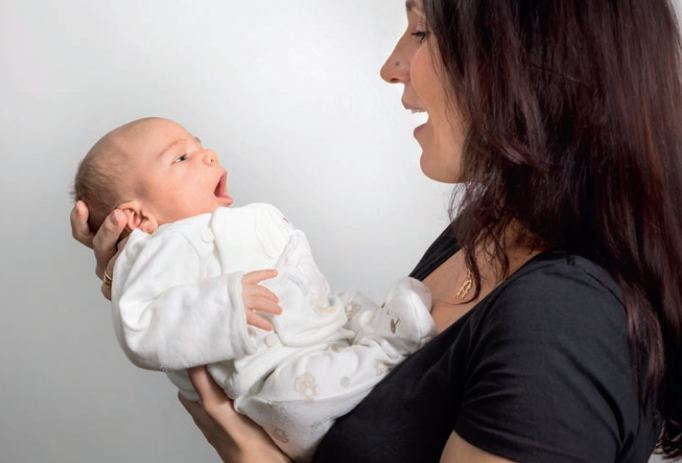In the first few months, your baby’s life is dictated by its physiological needs, which are hunger and sleep.
The baby’s senses gradually become more responsive as the motor, cognitive and social skills develop.
As the months go by, the more interested the baby will become in its surroundings and the more the baby will start to explore them.
Touch
Touch is one of the first sensory experiences of the newborn. Repeatedly and delicately touching the baby helps the baby to discover its body, the objects that surround it and more generally its immediate environment.
Smell
Smell is the basis of mother-child attachment. Recognizing your smell reassures your baby. Take your baby often in your arms to strengthen that bond. Do not hesitate to put a piece of material in the cradle with this smell. This olfactory reference will soothe the baby in your absence.
Vision
At first, your baby cannot distinguish colors. The baby is able to see clearly at about 20 cm, a sufficient distance to recognize your face. Visual stimulation is crucial during the first few months: colored objects and contrasting shapes stimulate the retina and promote neuronal connections.
Taste
Babies can distinguish between acid, sweet, salty and bitter tastes very early on. Before introducing a solid diet, breastfed babies become familiar with multiple flavors through breast milk.
Interactions
Your child responds to interactions with those around it. They are indispensable for the baby’s development. For the baby, playing is a way of experiencing the world, just like music and books. A safe, warm and stimulating environment promotes cognitive and motor development. Your baby is encouraged by your kind and loving gaze.
The body
For babies to get to understand their body and their environment, vary their positions during the day from lying on their back to on their stomach, for example when changing their diapers, after their bath or while playing. Put your baby with its arms forward, so that it can learn to raise its head. Give the baby time to get familiar with each of these positions and make sure it is always under the constant supervision of an adult. Put the baby also on its side to promote the discovery of left and right.
Stimulate the baby’s eyes with your voice, your hands or an object, so that the baby learns to turn its head to both sides. Talk to your child and play with it, to help it appreciate these changes in position. Often take your baby in your arms in the dorsal position to increase contact and attachment.
+ INFORMATION
Each child is unique. Based on your observations, you will get to know your baby and gradually learn the right way to take care of the child every day.

